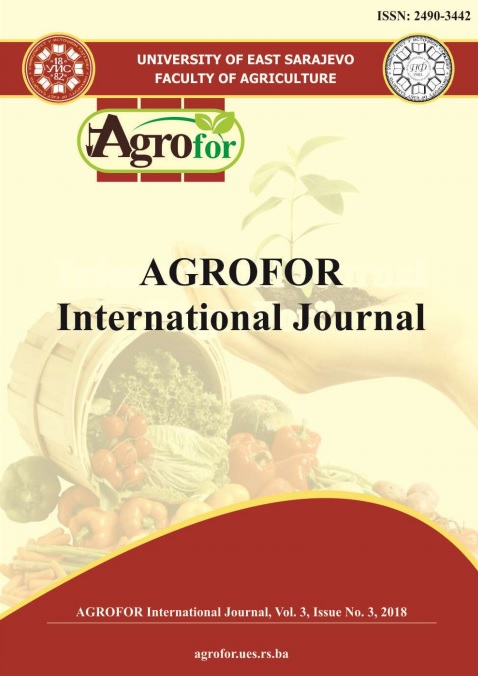DIFFERENCE IN THE CARCASS QUALITY AND MEAT CHEMICAL COMPOSITION IN TWO LINES OF SLOWGROWING CHICKENS WITH OR WITHOUT ACCESS TO PASTURE
DOI:
https://doi.org/10.7251/AGRENG1803014PAbstract
The study was carried out to compare the carcass quality and the chemical
composition of breast and thigh meat in two lines of slow-growing male chickens -
La Belle (LB) and Bresse Gauloise (BB) reared conventionally or outdoors, having
access to pasture. The birds were slaughtered at 12 weeks of age. Two-way
ANOVA was used to assess the effect of the rearing strategies as well as the line on
the carcass quality and meat chemical composition. Rearing system affected
significantly the carcass traits of the birds. The lines reared on pasture had lower
live and carcass weight as well as lower dressing percentage (P<0.001). On the
other hand they had higher percent (P<0.001) of the edible by-products (neck and
giblets). The percentage of the breast meat was significantly reduced in the birds
that had access to pasture (P<0.001), while thigh remained unaffected. The
pastured chickens displayed higher part of the wings (P<0.01). Outdoors rearing
influenced the chemical composition in the breast and thigh meat of the lines.
Chickens reared on pasture were characterised by lower lipid content (P<0.01) in
breast and reduced protein in thigh (P<0.05), as well as increased moisture in both
kinds of meat, however depending on the line (P<0.05). Furthermore, pasture
access resulted in reduced ash content of the breast meat (P<0.001), which was
lower in the LB chickens (P<0.01), while in thigh this parameter was strongly
determined by the interaction of the rearing system and line of the birds (P<0.01).

